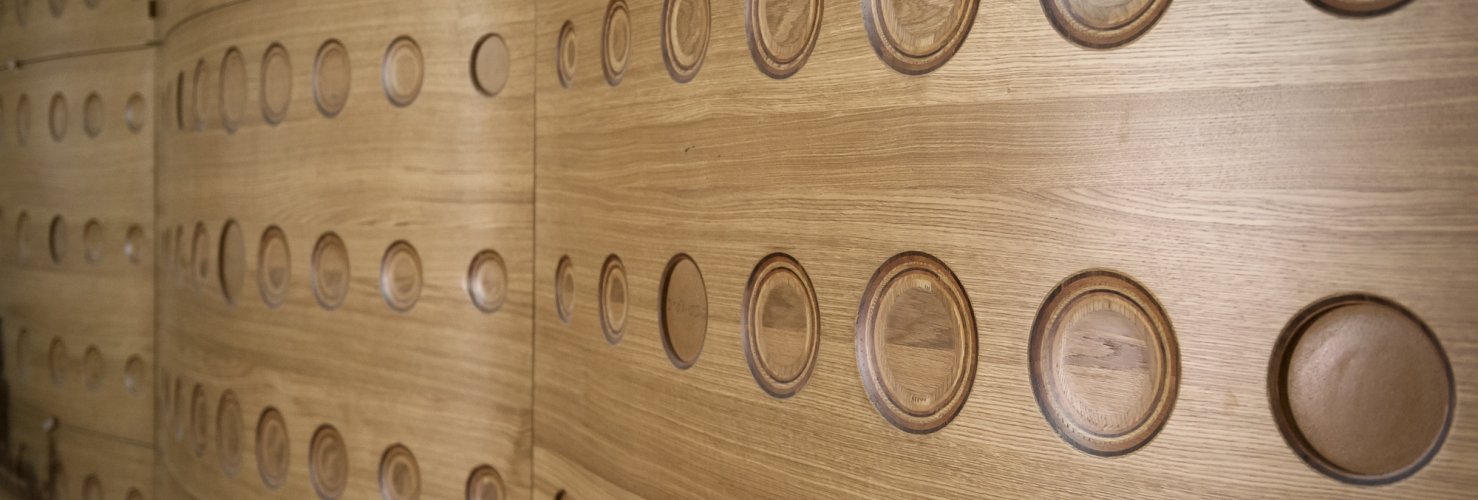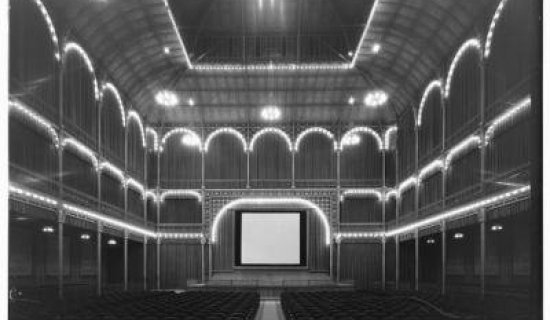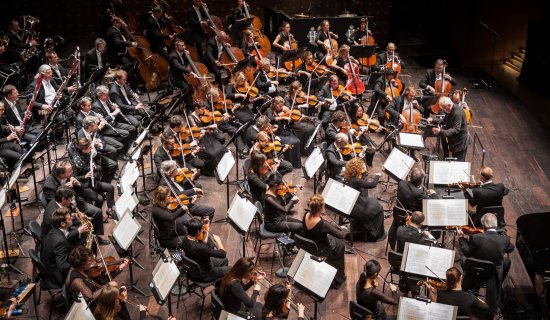In November 2016, the brand new Queen Elisabeth Hall opened its doors. The architectural firm Ian Simpson from Manchester designed the complex and unique concept in collaboration with Kirkegaard Associates from Chicago and Bureau Bouwtechniek.
Ian Simpson's team created an inspiring, flexible, powerful and energy friendly building with an exceptional combination of historical and new elements. The building is bright and elegant, a symbol in the city and a source of inspiration for everyone. The Queen Elisabeth Hall thus raises the international profile of the city to a higher level.
Ian Simpson works with Kirkegaard Associates from Chicago for the perfect sound resonances, as Kirkegaard is a world authority on acoustics. The shape of the hall makes the sound resonate perfectly. The new auditorium is higher, longer and narrower than the old one and has a wavy wooden wallcovering that helps to create top-quality acoustics. The absence of a fixed proscenium (front stage) avoids sound loss. For performances where a canvas or decor is required, the necessary material can be installed via the ceiling. Canopies or movable acoustic panels are suspended from the ceiling, which perfectly project the sound. These can also be functionally moved or removed.
The former hall barely reached 6 out of 10 in terms of acoustics, but the new version does a lot better, with a score of 9.3. This puts the Queen Elisabeth Hall on the same level as similar halls in Amsterdam, Vienna and Boston.
This brings us to the level of the very best concert halls, just like those in Boston, Vienna and Amsterdam. - Geert Bourgeois (Flemish Prime Minister at the time)
The seating capacity in the Elisabeth Hall is preserved. Depending on the layout (theatre, concert, congress), this capacity varies between 1,850 and 2,000 seats. The congress centre gained several additional rooms that can be divided into multiple compartments.
Look inside the Queen Elisabeth Hall
The Queen Elisabeth Hall is an exceptional piece of heritage with a rich past. The origins of this hall and of the residence orchestra, The Antwerp Symphony Orchestra, lie with the Royal Society for Zoology of Antwerp. The KMDA (Koninklijke Maatschappij voor Dierkunde Antwerpen) is an association focused on zoology and the conservation of nature. In 1895, the management of the KMDA came up with the idea of organising zoo concerts in Antwerp ZOO. This marked the beginning of the current Queen Elisabeth Hall. There has been a banquet hall on the premises of the Elisabeth Hall since 1897, but Queen Elisabeth only opened the actual concert hall in 1960. Read more about our rich history below and find out everything you would like to know about the Antwerp Symphony Orchestra.


